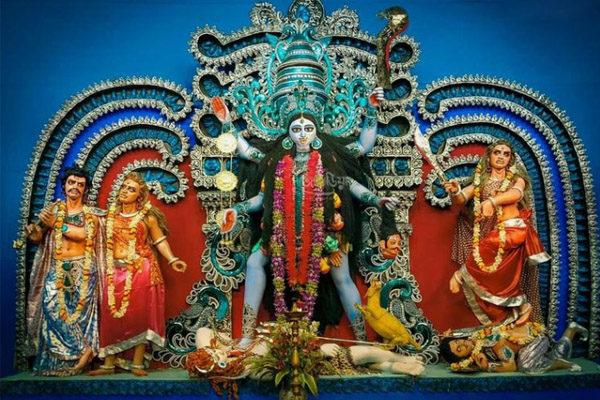.Kali Puja 2025: Kali Puja (also known as Shyama Puja) is a major Hindu festival celebrated especially in West Bengal, Odisha, Assam, and Tripura, and dedicated to Goddess Kali, the fierce form of Goddess Durga. Kali Puja will be celebrated on October 20, 2025 (Monday).
Why is Kali Puja performed?
Kali Puja worships Goddess Kali, who symbolizes:
the destruction of evil and ignorance, the empowerment of the divine feminine, and the protection of devotees from negativity.
She is often depicted standing on Lord Shiva, symbolizing the triumph of divine energy over inertia and darkness.
When is Kali Puja performed?
Kali Puja occurs on the new moon night of the Hindu month of Kartik, which typically coincides with Diwali in North India.
How It’s Celebrated
Homes and temples are decorated with lamps, diyas, and rangoli. Idols of Goddess Kali are worshipped with flowers, sweets, and offerings. Mantras and stotras from texts such as the Chandi Path and Kali Sahasranama are recited. Some devotees, especially in Bengal and Assam, perform Tantric rituals. Like Diwali celebrations elsewhere, fireworks and light displays are common. Devotees seek the goddess for strength, courage, and protection.
Symbolism
Kali’s form—black skin, a garland of skulls, and a protruding tongue—symbolizes:
the power of time (Kaala) that consumes all evil, the eternal cycle of creation and destruction, and the soul’s liberation from ego and delusion.
Preparations for Kali Puja
Before midnight (the main puja time), devotees:
Clean the home or pandal and decorate it with alpana/rangoli, flowers, and oil lamps. Set up an altar (chowki) with an image or idol of Goddess Kali – usually standing on the chest of Lord Shiva.
Have the offerings ready – rice, sweets, bananas, coconut, jaggery, red hibiscus (her favorite flower), and incense.
The Goddess is worshipped facing south, symbolizing facing one’s fears and darkness.
Key time: Kali Puja is performed at midnight, as Kali represents the power that emerges from darkness.
Significance of Kali Puja
Kali Puja is celebrated to invoke the power of transformation – the destruction of ego, ignorance, and negativity – and to awaken inner strength and wisdom.
While Diwali celebrates Lakshmi (wealth and prosperity) in most parts of India, Bengal, Assam, and Odisha celebrate Kali (power and protection) on the same night.
Together, they represent two aspects of the divine feminine – abundance and liberation.
Philosophical and Spiritual Messages
Kali teaches three fundamental truths of life:
Whatever is created is destined to dissolve.
She is the power of time—everything is born and dissolved within her.
Nothing is permanent, not even suffering.
True Liberation Beyond Fear
Her fierce form inspires devotees to confront their inner demons—greed, anger, attachment—instead of running from them.
When you confront darkness, it loses its power over you.
Compassion Behind the Fierceness of “Mother”
Although terrifying in form, Kali is called “Mother”—the Divine Mother. Her anger is directed only against evil; for her children, she is gentle, protective, and loving.
Why is Kali worshipped on Amavasya?
Amavasya (the darkest night) symbolizes the unknown and invisible parts of the self. Worshiping Kali at midnight symbolizes invoking divine energy in the midst of darkness, with the belief that even in chaos, divine order prevails. It is a reminder: “Light does not destroy darkness—it transforms it.”
Cultural and Emotional Significance
For Bengalis and many Eastern devotees, Kali is “Mother”—intimate, personal, and compassionate. People pray to her for courage, protection, spiritual awakening, and sometimes even material well-being. On this night, temples like Kalighat (Kolkata) and Dakshineswar become centers of devotion.
The Essence of Kali Puja
“Kali destroys only to recreate.” She reminds us that endings, even if painful, are often hidden beginnings. Thus, Kali Puja becomes a night of surrender—letting go of fear, desires, and attachments—and invoking the power of truth, strength, and freedom.

